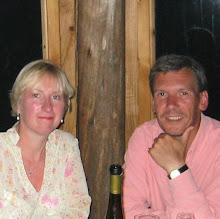 |
| Cladh nan Sasunnach - Picture Credit Nigel Brown |
Quick aside about the word "sassenach". It's commonly supposed to be a term of abuse used by Scots to describe the English. Wrong. It's simply the Gaelic word for a non-Gael. So in the eyes of a native of Wester Ross, someone from Edinburgh is as much of a sassenach as someone from London. It's a Gaelic corruption of the word "Saxon".
Anyway, the southerners interred by the shore of Loch Maree were not some isolated troop of redcoats slaughtered by a posse of vengeful clansmen in the aftermath of Culloden. The truth was something rather more prosaic - they were the employees of a local ironworks.
Or so tradition tells. Scholarly investigation suggests the fragmentary remains barely visible in the bracken are of a much older graveyard. But what is undeniable is that there was an ironworks on the shores of Loch Maree in the early 17th century which did employ "English" (which could have meant Lowland Scots). It's reputed the earliest industrial ironworks (as opposed to cottage industry supplying purely local needs) in Scotland: it's not a coincidence there's also a spot called Furnace on the east shore of the loch near Letterewe.
But the lure to this remote spot was not local deposits of iron ore but trees which could be cut to make charcoal to fuel the smelters to produce the metal: in the tree-less land Scotland was at the time, it was a case of the raw material mountain going to the fuel source Mohammed.
It's not the last time strangers have been buried in a remote Highland location in pursuit of a valuable metal. Fast forward 300 years and 70 miles south to Kinlochleven near Fort William. In an isolated spot in the hills a couple of miles above the village, you'll find the Navvies' Graveyard.
 |
| Picture credit RCAHMS |
 | ||||
| Picture credit - John Ferguson |
Just as the iron works by Loch Maree are long gone, so too the aluminium smelter at Kinlochleven is no longer. It shut in 2000 although the power station is still operating, feeding electricity in to the national grid. And the Navvies' Graveyard remains in a nice example of how history has a habit of repeating itself.




Fascinating reading (as are all your posts) - Mrs Riley would appear to be Catherine Riley aged "above 59 years" who died 27th February, 1909 at the Dam, Kinlochleven from what her entry in the Register of Deaths for Glencoe & Ballachulish seems to read "Extensive burns of scalp & Exhaustion 6 weeks"
ReplyDelete